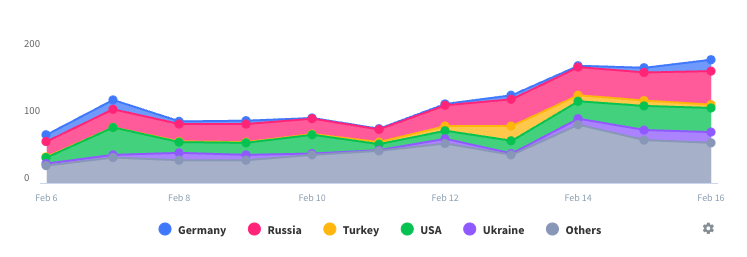Global kidnapping
cation with the provider. STATISTICS OF KIDNAPPED FOREIGN NATIONALS – MARCH-APRIL 2017 Constellis has recorded a total of 193 kidnapped foreign nationals (March-April 2017). 72% of them were kidnapped in Africa, 10% in the Americas, 10% in the Middle East, 6% in Asia and the Pacific and 2% in Europe. Kidnapping is continuously evolving; spreading geographically and numerically on the international stage. According to Constellis, 25 countries rank as either high or very high for kidnapping. These include non-conflict countries and sizable economies with effective governmental frameworks, indicating that kidnapping has morphed into a worldwide phenomenon. Additionally, Constellis has identified a number of countries on a consolidated “watch list”, where kidnapping numbers are on the rise, such as Argentina, Turkey, Kenya and Madagascar; and countries with decreasing kidnapping rates, but where the threat remains, including Mozambique, Colombia and Brazil. CURRENT GLOBAL TRENDS LATIN AMERICA In 2017, a number of Latin American countries have reported important increases in kidnapping rates, partly due to political instability and the economic crisis sweeping the region. Hostage taking is mainly carried out by criminal groups, mostly for profit, but on occasion with a political element. Mexico, Colombia and Venezuela have been identified as regional leaders. Additionally, this region has one of the highest number of short-term kidnappings, to include what is commonly known as “paseo millionario” (millionaire tour), where a victim is taken to ATMs, both before and after midnight and forced to withdraw the maximum allowable amount. Another form of extortion on the rise is Virtual Kidnapping, where kidnappers attempt to extort a ransom by falsely claiming they have abducted a loved one. In Mexico, tourists have been particularly targeted, often at their hotels. In Venezuela, against a backdrop of rising criminal activity and reduced interest and capacity on the part of authorities, expatriates have been increasingly targeted for kidnapping, usually for large ransoms. Moreover, thousands of undocumented migrants continue to disappear every day throughout Latin America, targeted by numerous threat actors along their way to the US. In these particular cases, their lack of documentation and informal methods of travel make it challenging not only to ascertain their location, but also to report cases and provide updates from authorities to their family member









